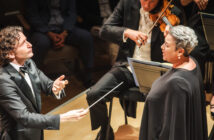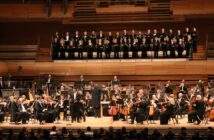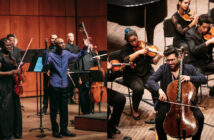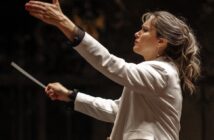Scott Cantrell is the distinguished long-time classical music critic of the Dallas Morning News. He recently wrote an article titled “Let’s go easier on those fortissimos” (January 31, 2014) in which he criticized Jaap van Zweden and the Dallas Symphony (DSO) for excessive volume in music by Brahms (Piano Concerto No. 2/Symphony No. 4) and Dvorak (New World Symphony).
I wholeheartedly agree with Mr. Cantrell’s general point that volume levels in music performance have become excessive. Much of the blame for this phenomenon must go to technology; electronically amplified instruments can produce literally ear-splitting volume. With respect to his particular complaint about volume levels in recent DSO concerts at the Meyerson Symphony Center, however, I beg to differ. While I was not present for any of the concerts he is talking about, I have been in the Meyerson often enough to have well-informed opinions about the hall, the orchestra and the conductor.
First of all, Mr. Cantrell is factually incorrect in saying that “those Brahms and Dvorak scores from the late 19th century have no dynamic marking louder than the traditional fortissimo.” For the record, the Dvorak New World Symphonyhas many fff markings.
Secondly, the two pieces which mainly concern him – the New World Symphony and the Brahms Piano Concerto No. 2 – have different orchestration: there are no trombones in the Brahms and the two trumpets and timpani are used very sparingly. I can’t imagine the climaxes in the Brahms “turbocharged to blasts better suited to Shostakovich.” The Dvorak is scored for a bigger orchestra and the composer is obviously aiming for bigger climaxes than was Brahms in the B flat concerto.
Apart from the factual issues and the differences between the two pieces, and while it is historically true that orchestras have gotten louder over the past 200 years, Mr. Cantrell’s comments fail to take into account two other major factors: the halls orchestras play in have gotten larger, and orchestras have got to produce more sound to fill them.
To accommodate changes in the size of concert halls, some instruments have become more powerful, and for performances in larger halls the number of players is sometimes increased as well – all of which makes sense. It is absurd to present a string quartet performance in Carnegie Hall – although it is often done today if the market will bear it – and it is just as ludicrous to present so-called “historically-informed” performances in such large halls.
Finally, while Mr. Cantrell often raves about what Jaap van Zweden has achieved in Dallas, in this article he turns intensity – one of van Zweden’s greatest strengths – into a negative. Van Zweden is an intense conductor and has the ability to get that intensity from his players. If van Zweden can get “white-hot intensities” from the DSO strings in Brahms’ Fourth Symphony, more power to him. That kind of music-making is what makes concert-going special.
Paul Robinson is the author of Herbert von Karajan: the Maestro as Superstar, and Sir Georg Solti: His Life and Music. For friends: The Art of the Conductor podcast, “Classical Airs.”
Photo of Maestro Jaap van Zweden in rehearsal with members of the DSO by Marita














